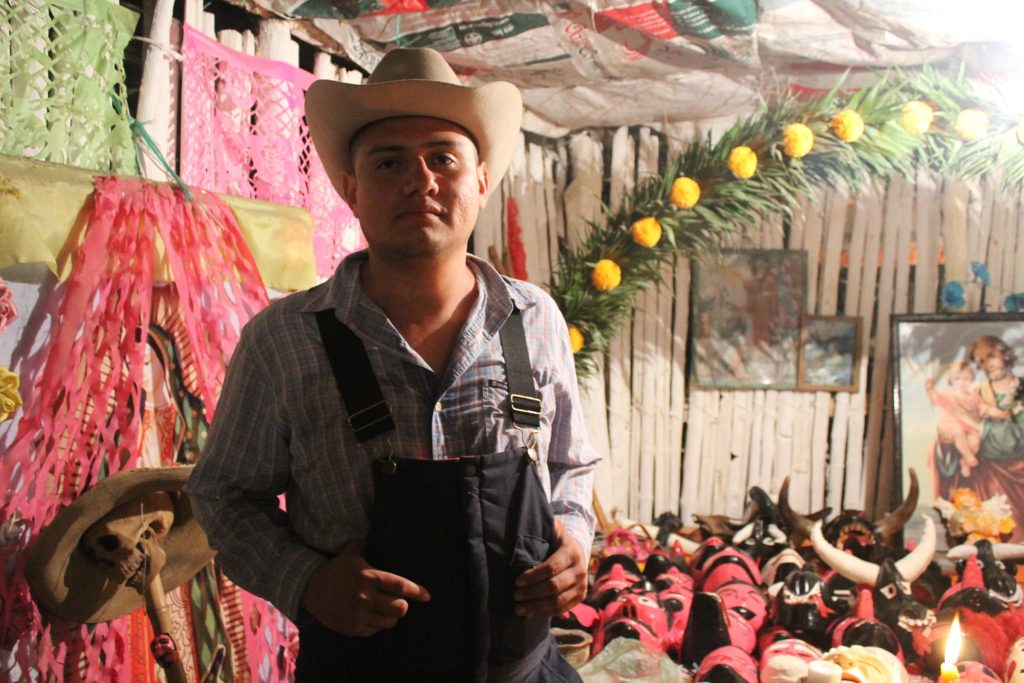Pablo Uriel Mancilla Reyna
The College of San Luis
is a doctoral candidate in the Anthropological Studies Program at El Colegio de San Luis. His research interests are ritual, visual anthropology, religious practices and the anthropology of art. She is part of the Visual Anthropology Laboratory of El Colegio de San Luis (LAVSAN).
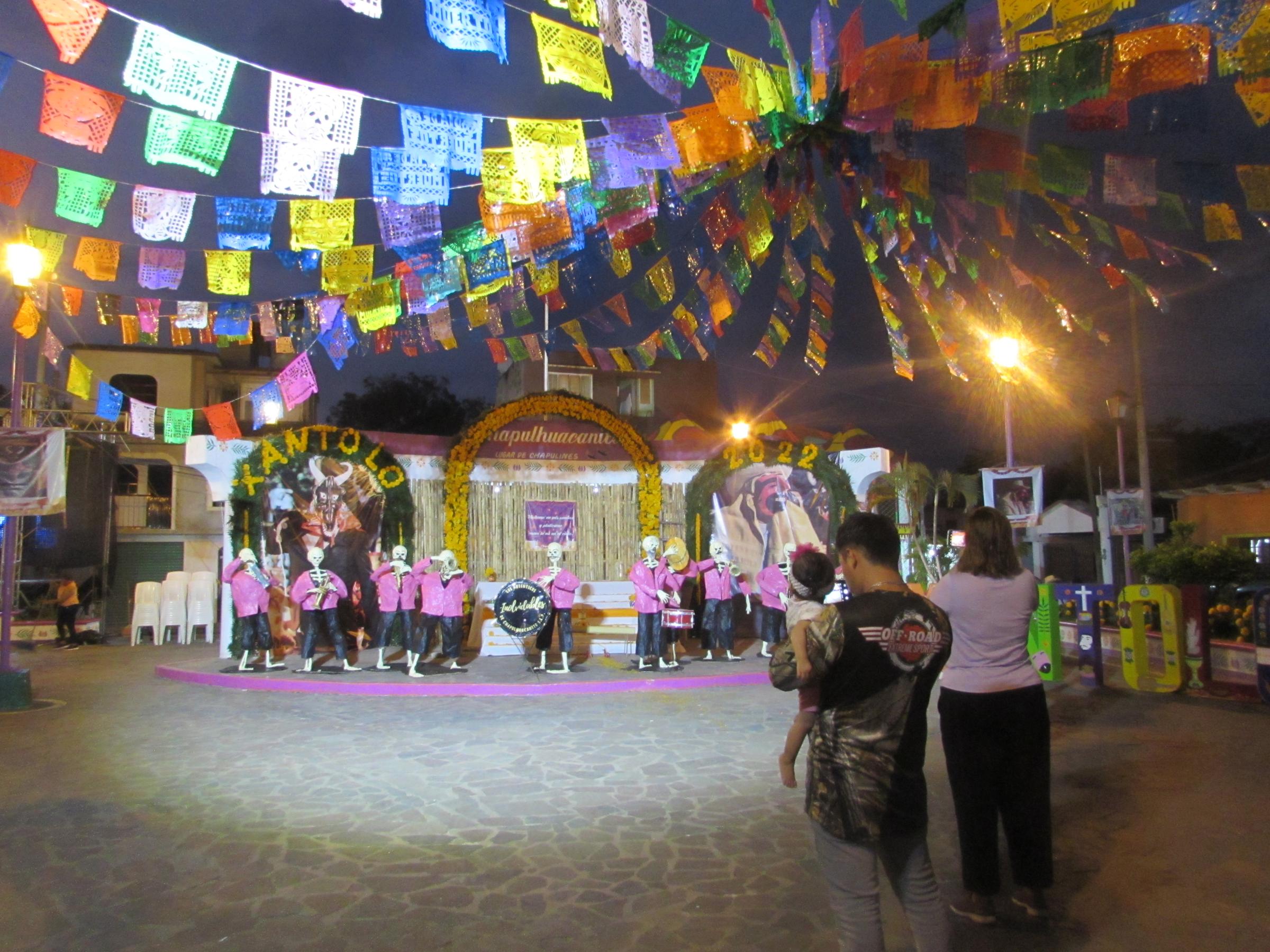
Image 1. Chapulhuacanito: place of grasshoppers and masks.
Chapulhuacanito, Tamazunchale, S.L.P. Mexico. November 2022
During the days of the Xanto festival, the center of Chapulhuacanito is decorated for the attraction of the townspeople and visitors.
This year we hope that the delegation arranges it well, because the Xantolo is Chapulhuacanito's big party.
Participant of the costumed group of the San José neighborhood.
Image 2. Seed for St. John's day
Chapulhuacanito, Tamazunchale, S.L.P. Mexico. November 2019
The cempasúchil flower that is placed on the domestic altars during Xantolo is left to dry and its seeds will be sprinkled on June 24 (St. John the Baptist's Day) of the following year. On that day they go out to their backyards and sprinkle the seeds that will give them that year's Xantolo flower.
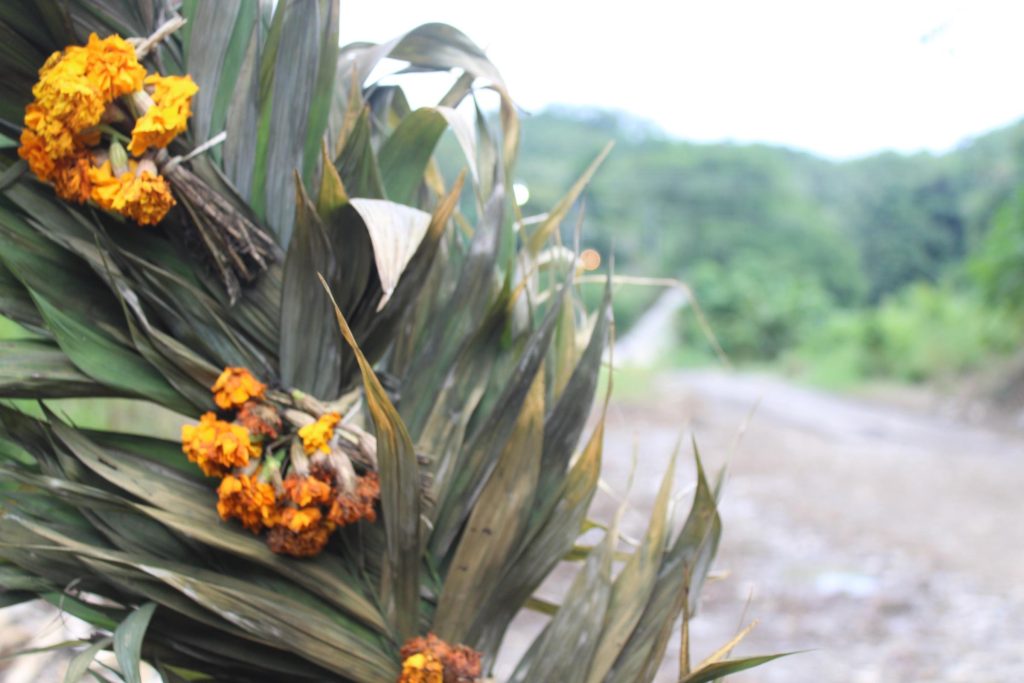

Image 3. Tamales for the offering
Chapulhuacanito, Tamazunchale, S.L.P. Mexico. October 2023
During the descent of masks and the days of Xantolo, the women organize themselves to make the tamales that they will offer and that will be the food for the participants of the costumed group, who will come to eat them when they finish dancing in the streets of the community.
Making tamales is one of the most important tasks and is the support of the Xantolo ritual process at the time of offering and exchanging food.
Image 4. Domestic altar
Chapulhuacanito, Tamazunchale, S.L.P. Mexico. November of 2019.
I'll be waiting for you for Xantolo so you can take a picture of me with the altar I'm going to put up here in the house," said don Barragan.
Excerpt from my field diary
In the houses a domestic altar is set up and dedicated to the deceased members of the family. Here food is placed and an offering is made, sometimes a mask is also placed, referring to their participation in a costumed group.


Image 5. Not saying thank you
Chapulhuacanito, Tamazunchale, S.L.P. Mexico. November 2019
In the domestic offerings are placed the food that will be smoked and then eaten. In Chapulhuacanito, during the days of Xantolo, people eat what they put on the altar. When you are invited to ofrendar (consume the food on the altar), you do not have to say thank you because the food was prepared for the deceased and you are the only vehicle that consumes it in its material form.
Image 6. The descent of the devil
Chapulhuacanito, Tamazunchale, S.L.P. Mexico. November 2023.
In the first lowering of masks it is crucial to lower the devil masks with bent horns and standing horns. These are received by a past businessman who, upon taking them, blows copal from the sahumerio.
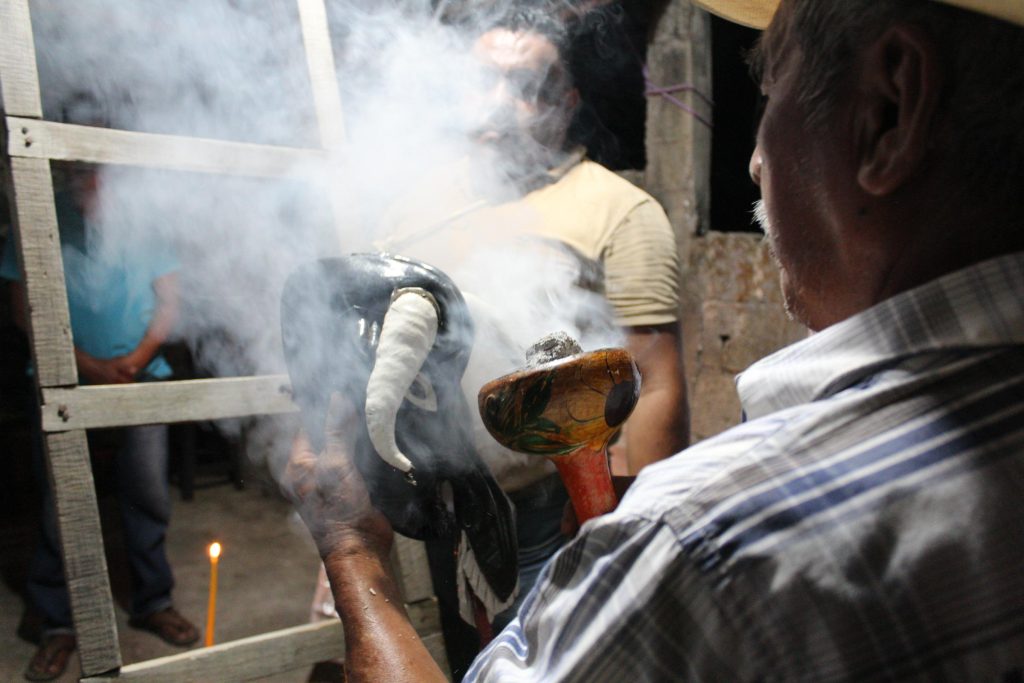
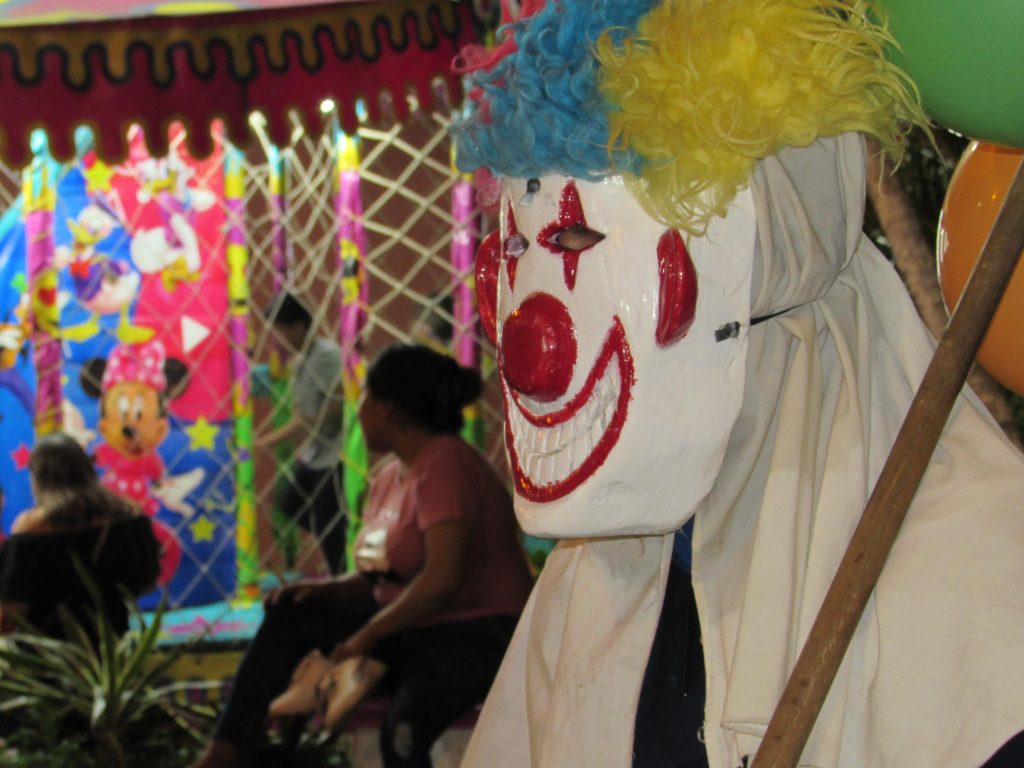
Image 7. The clown
Chapulhuacanito, Tamazunchale, S.L.P. Mexico. November 2022.
In addition to the traditional pink masks of the San José neighborhood, there are others that lead participants to create other types of characters.
This year they don't know what I'm going to dress up as, and I don't want to tell anyone because they'll copy it later.
Participant of the San José neighborhood group
Image 8. The photographer
Chapulhuacanito, Tamazunchale, S.L.P. Mexico. November 2019.
We were at the businessman's house while everyone was preparing their costumes, when Toño arrived and told me: "You don't know what I'm going to dress up as, you're going to be surprised, Uriel".
Excerpt from my field diary
One of the qualities of the costume is that it can include elements of what they see or is happening at the time. In that case, one of the costumed decided to include my work as an anthropologist/photographer in the way I would appear during those days.
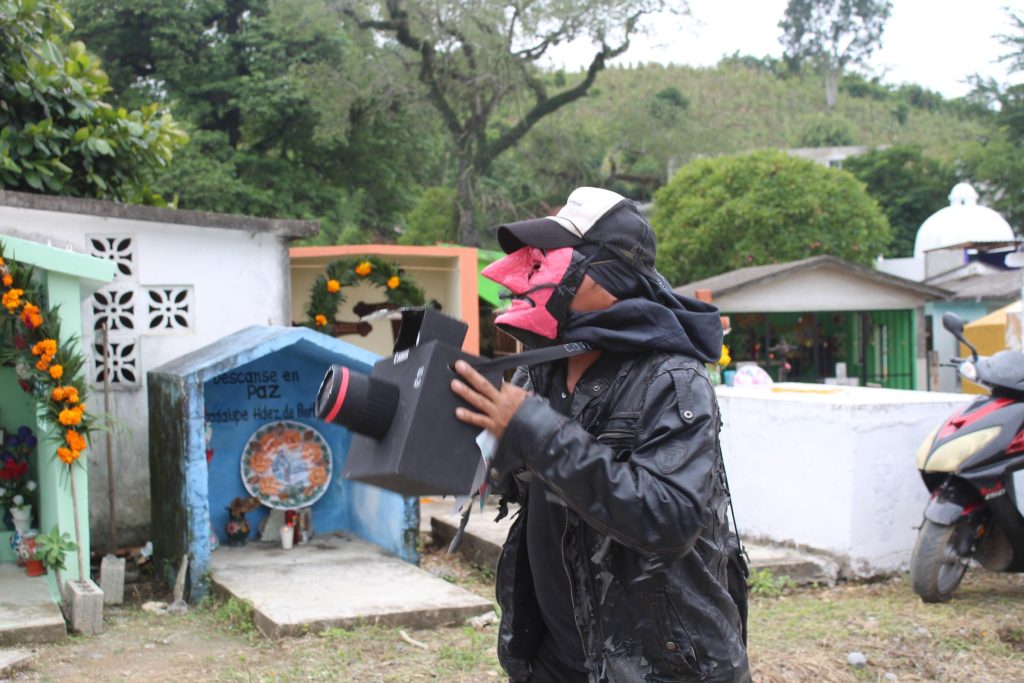
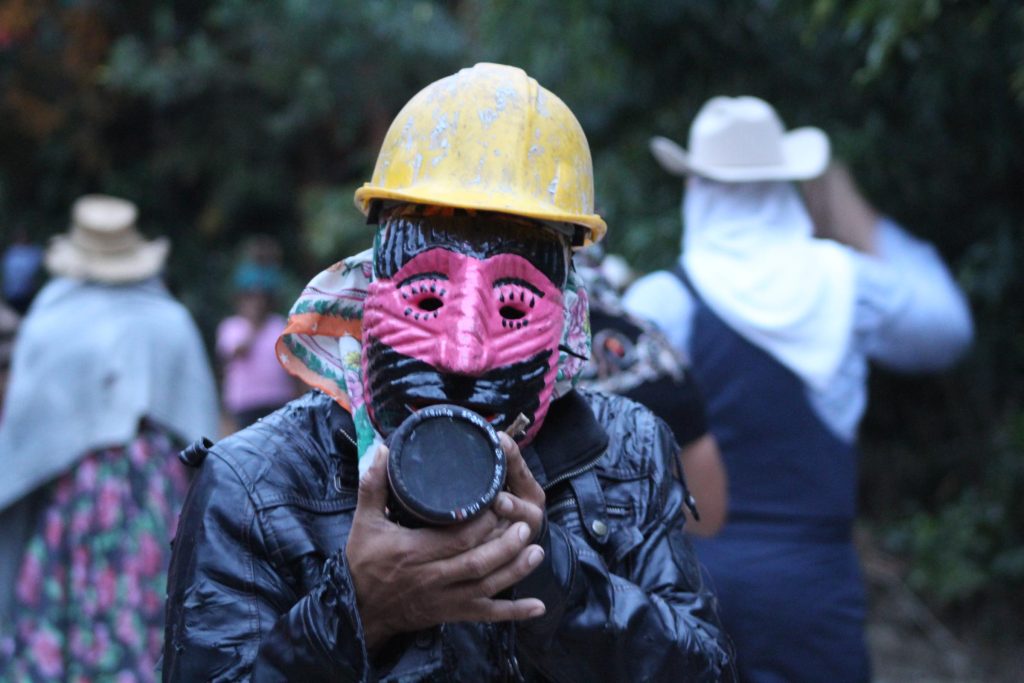
Image 9. Game of glances
Chapulhuacanito, Tamazunchale, S.L.P. Mexico. November 2019.
After Toño's camera was destroyed, only the lens was preserved. The playful character of the Xantolo achieved a game of looks in which the look and the way of doing it were exposed.
Image 10. Music for the masks
Chapulhuacanito, Tamazunchale, S.L.P. Mexico. November 2019.
The music of the Huapango trio is crucial in the descent of the masks of each of the costumed groups. When the trio arrives at the empresario's house, it begins to play "El canario" for the masks. In addition, he accompanies the masqueraders to their dance through the streets of the community during the four days of the festival.
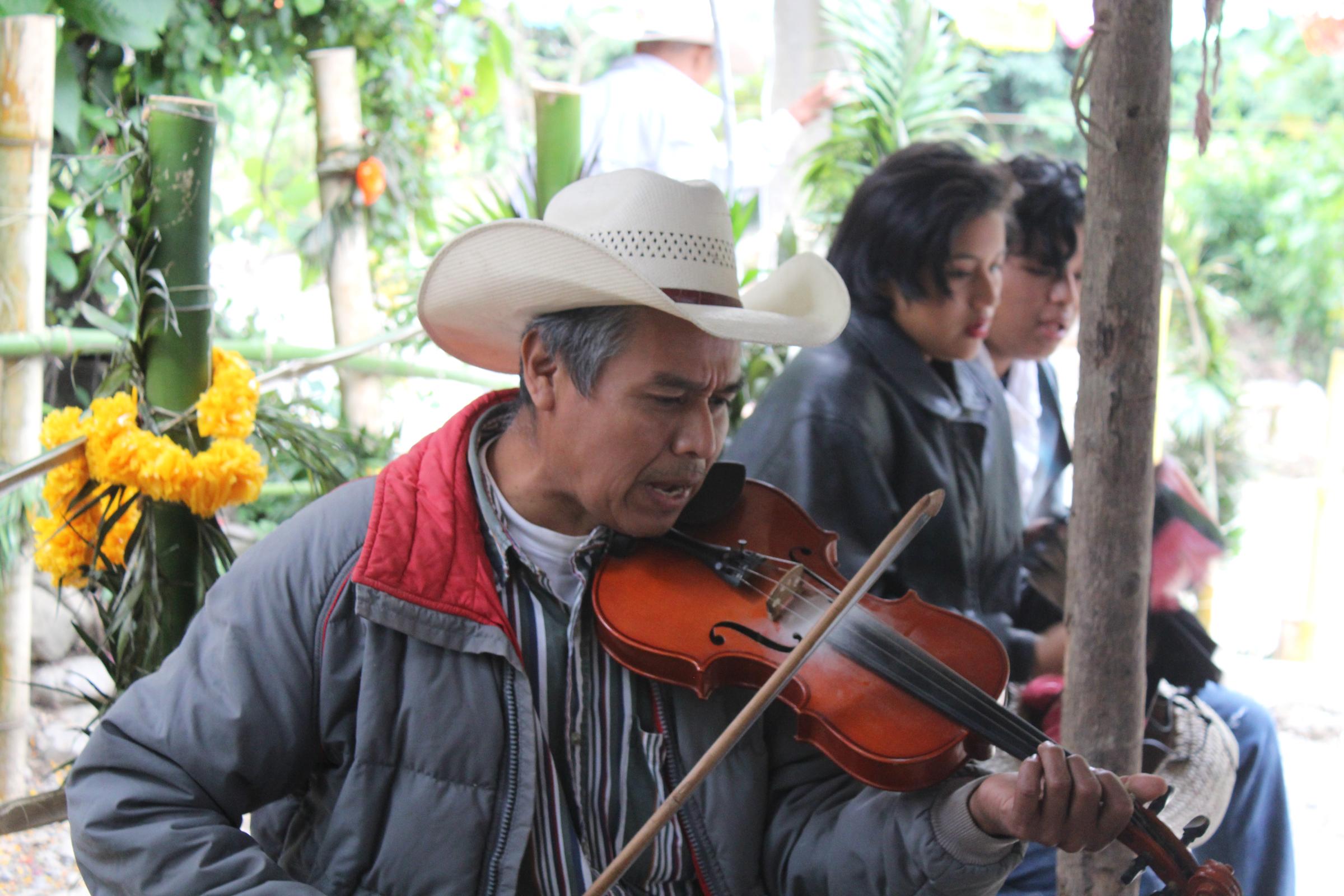

Image 11. The devil in the mural
Chapulhuacanito, Tamazunchale, S.L.P. Mexico. May 2023.
One of the most relevant masks in Chapulhuacanito is that of the devil. This is because the shape, figure and image of this mask is the way the devil appeared in this community. For this reason some murals have been dedicated to highlight the importance of this image.
Image 12. "We have to start playing cuetes". El Gordo, second businessman of the San José neighborhood.
Chapulhuacanito, Tamazunchale, S.L.P. Mexico. March 2013.
In addition to the music, another fundamental sound aspect is the rocket or, as the people say: "echar cohete". Its thunder in the sky creates a festive atmosphere that serves to warn a large part of the community where they are preparing for the offerings, the lowering of masks or that the costumed are getting ready to go out into the streets of the community.
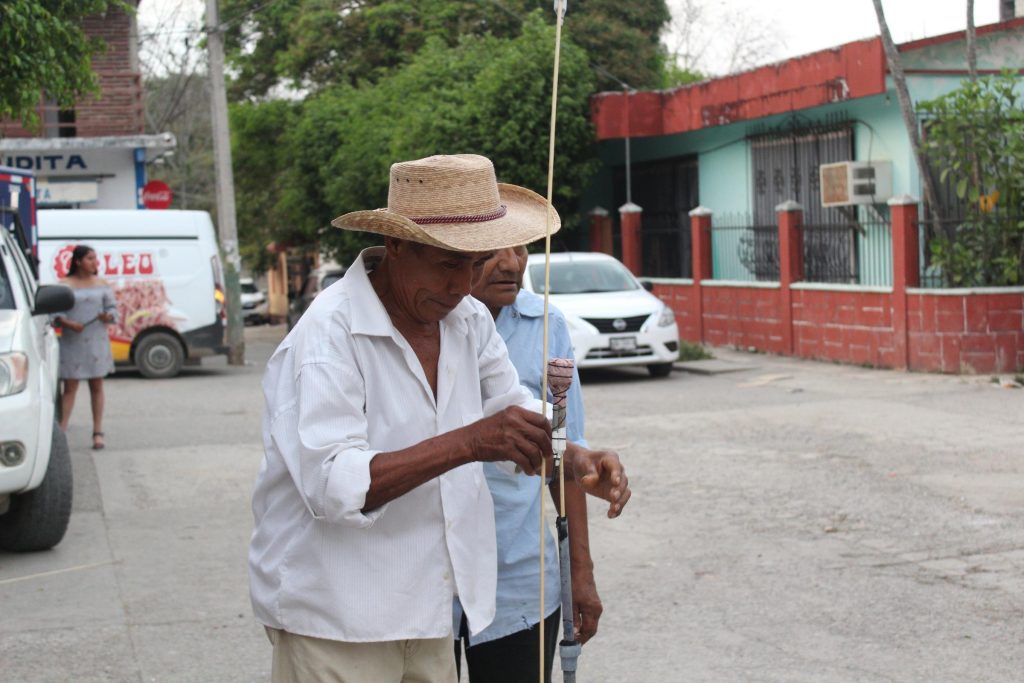
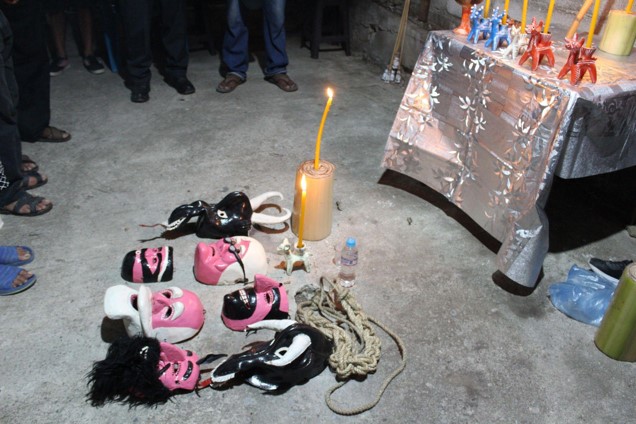
Image 13. "Touching the floor means that the past is already here among the living". Cecilio, a former businessman from the San José neighborhood.
Chapulhuacanito, Tamazunchale, S.L.P. Mexico. October 2023.
During the first mask lowering, only seven main masks are lowered. In this case, the crouching horned devil, the standing horned devil, the older cole, the grandfather, the grandmother, the mask of the second businessman and the mask of the chiflador were lowered. After lowering them from the false ceiling of the house where they are kept, it is necessary that the masks touch the ground, which is a sign that the deceased are already on the earthly plane, where we, the living, live.
Image 14. "In the first descent it is something intimate with few people, and in the second descent it is big". El Gordo, second businessman of the San José neighborhood.
Chapulhuacanito, Tamazunchale, S.L.P. Mexico. October 2023.
For the second descent of masks, the group of costumed people from the San José neighborhood organizes and sets up chairs to wait for about 50 people, sometimes there are more. All the people are offered tamales, coffee, chocolate and soft drinks.


Image 15. Transmissions
Chapulhuacanito, Tamazunchale, S.L.P. Mexico. November 2023.
The second descent of masks can be such a big event, that businessmen manage the transmission of the ritual. Sometimes it is only given through social networks and other times they take the community radio so that it can broadcast.
Image 16. Mask heights
Chapulhuacanito, Tamazunchale, S.L.P. Mexico. October 2023.
The altars where the masks are placed are usually larger than the domestic altars. This leads to a greater elaboration of the arch and cempasúchil flower necklaces. Making a bow for the lowering of masks carries a signifier of prestige and pride.
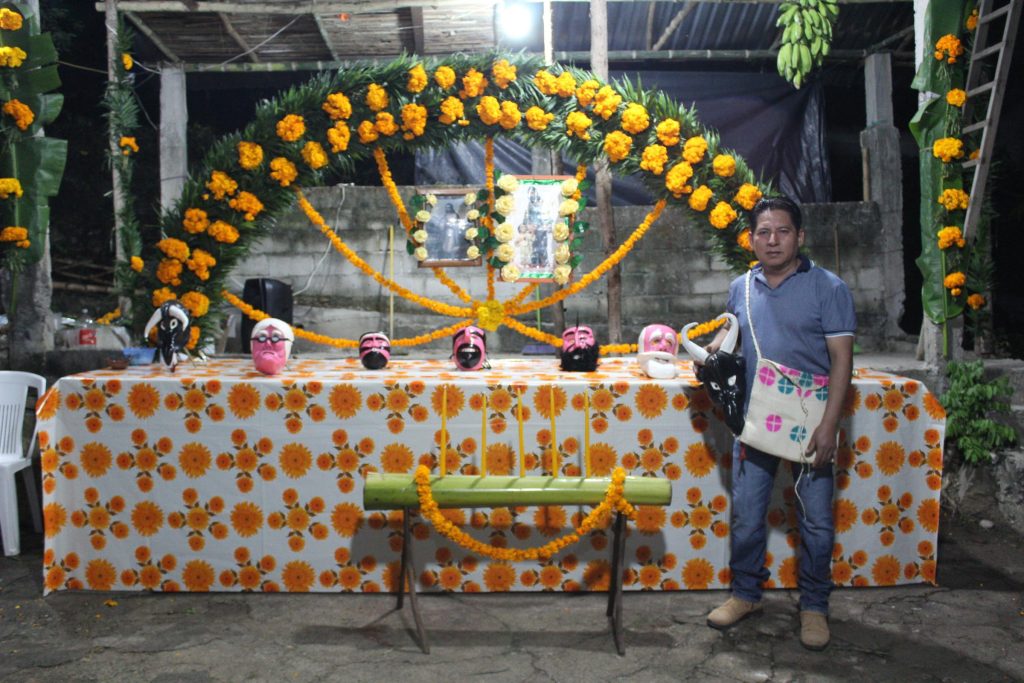
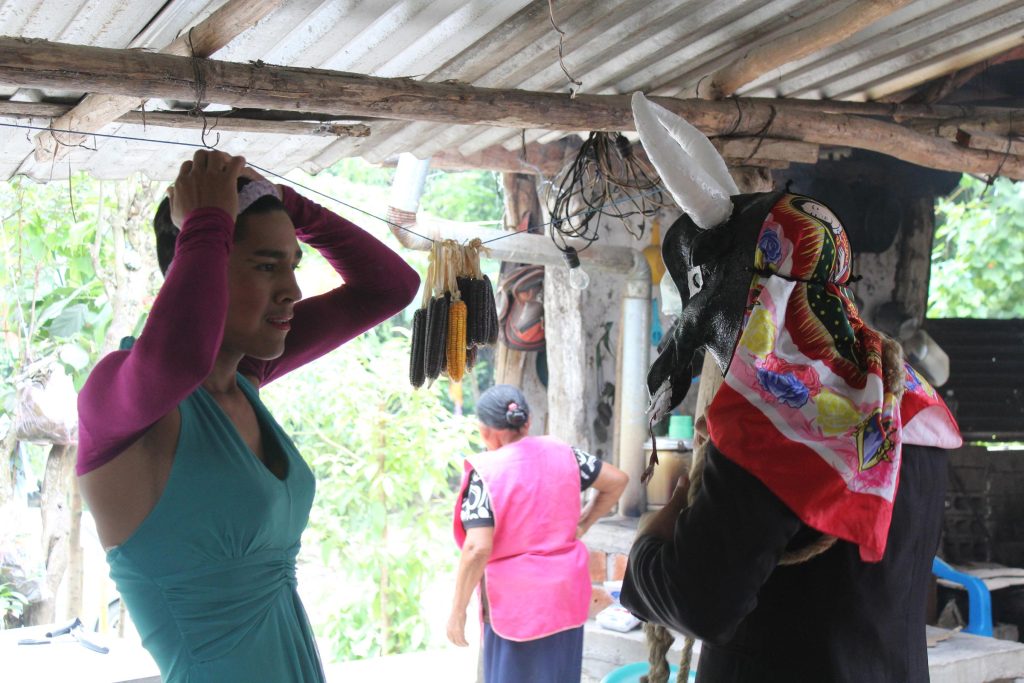
Image 17. Have your costume ready to go out.
Chapulhuacanito, Tamazunchale, S.L.P. Mexico. November 2019.
The participants of the costumed group meet at the businessman's house where they take their mask and prepare their costume. In some occasions they take clothes that are already in the place of the masks and that are used year after year, in others they wear their own clothes. In addition to disguising themselves with masks, some men also dress up as women to make couples when dancing.
Image 18. The new generations
Chapulhuacanito, Tamazunchale, S.L.P. Mexico. November 2019.
If you notice, this group brings a lot of children, many of them are attracted by it and come here, and that's good because they are the new generations. I used to walk like them since I was little, behind the costumes.
El Gordo


Image 19. Small mask
Chapulhuacanito, Tamazunchale, S.L.P. Mexico. November 2019.
I have already made my son a small mask, which fits him well and can be used for the Xantolo.
Chilo, community masquerader
Image 20. Sweat
Chapulhuacanito, Tamazunchale, S.L.P. Mexico. October 2019.
Imagine all that a mask has gone through inside, it has the sweat and energy of many people who have worn it.
Óscar, disguised as the neighborhood of San José
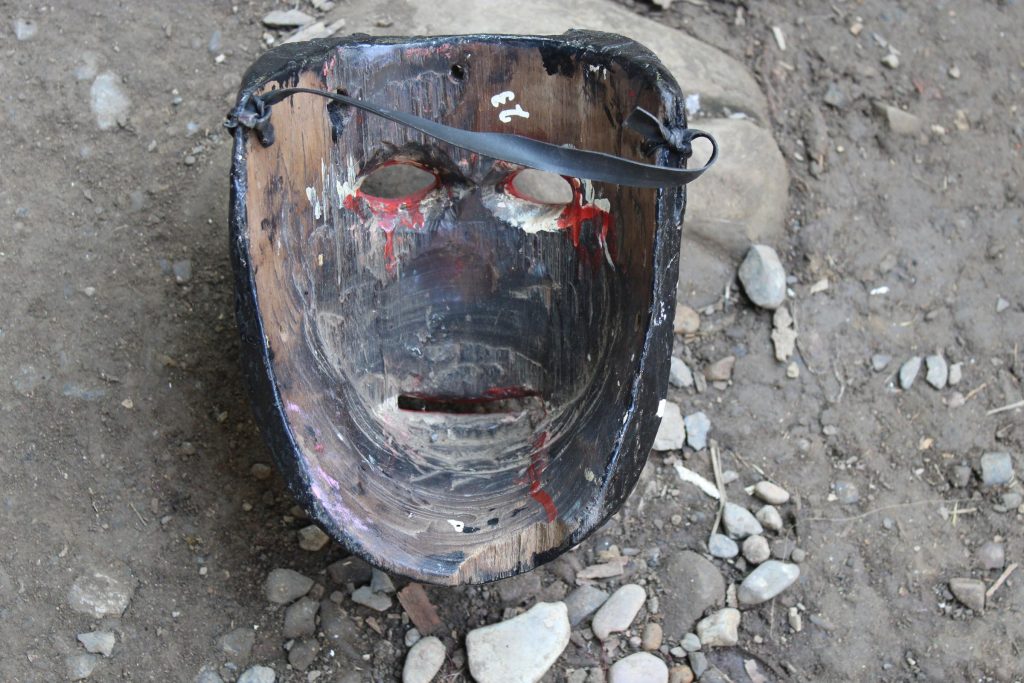

Image 21. The descent from the school
Chapulhuacanito, Tamazunchale, S.L.P. Mexico. October 2023.
Each of the masks that is lowered has to be smoked before being placed on the floor and given aguardiente to drink.
Image 22. Passing the drink
Chapulhuacanito, Tamazunchale, S.L.P. Mexico. October 2023.
Deliver and receive: these are words used in the lowering of masks and consist of a dialogue between present and past businessmen, in which sharing a drink (aguardiente) is fundamental during the ritual, to strengthen the process in which they welcome the deceased.
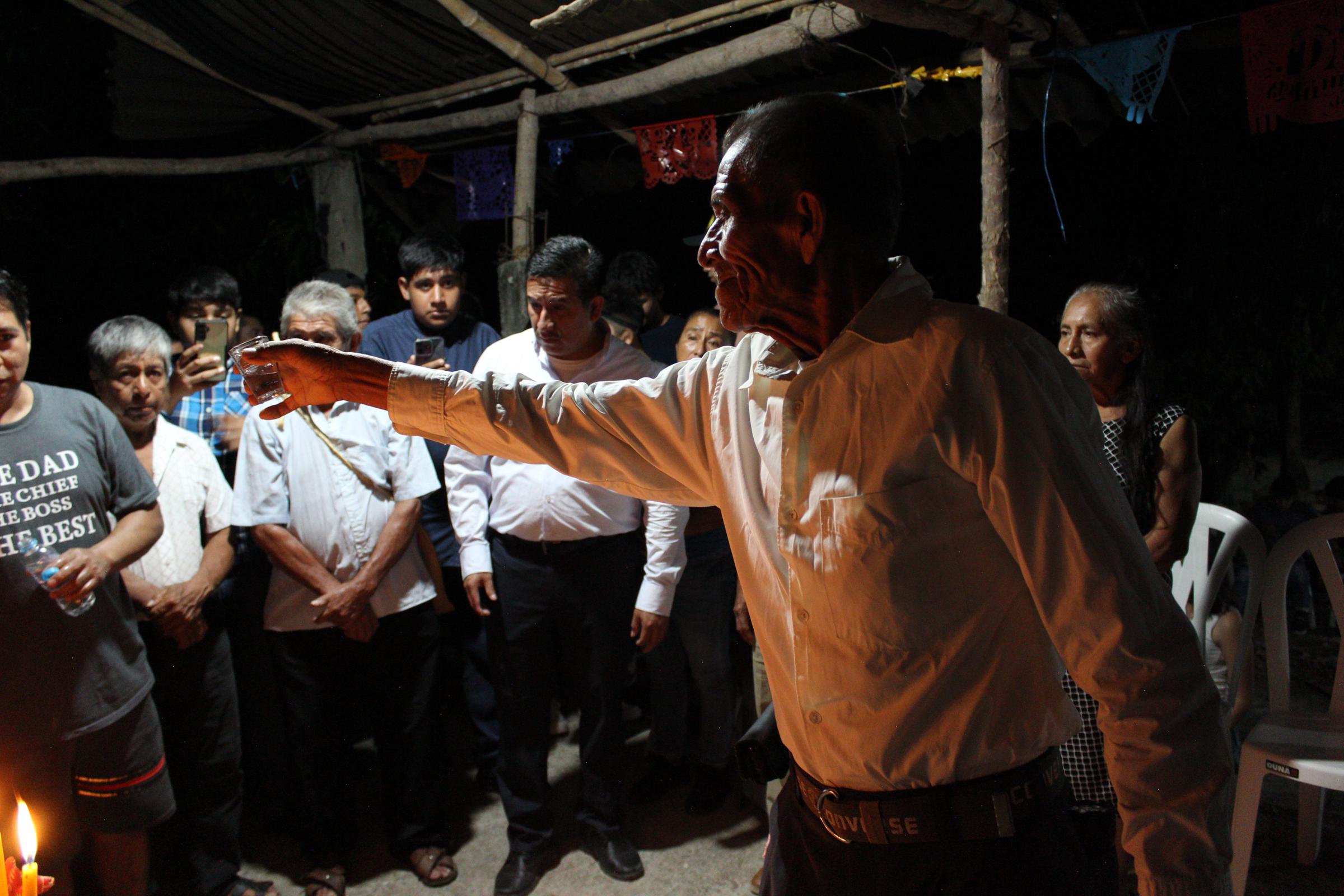
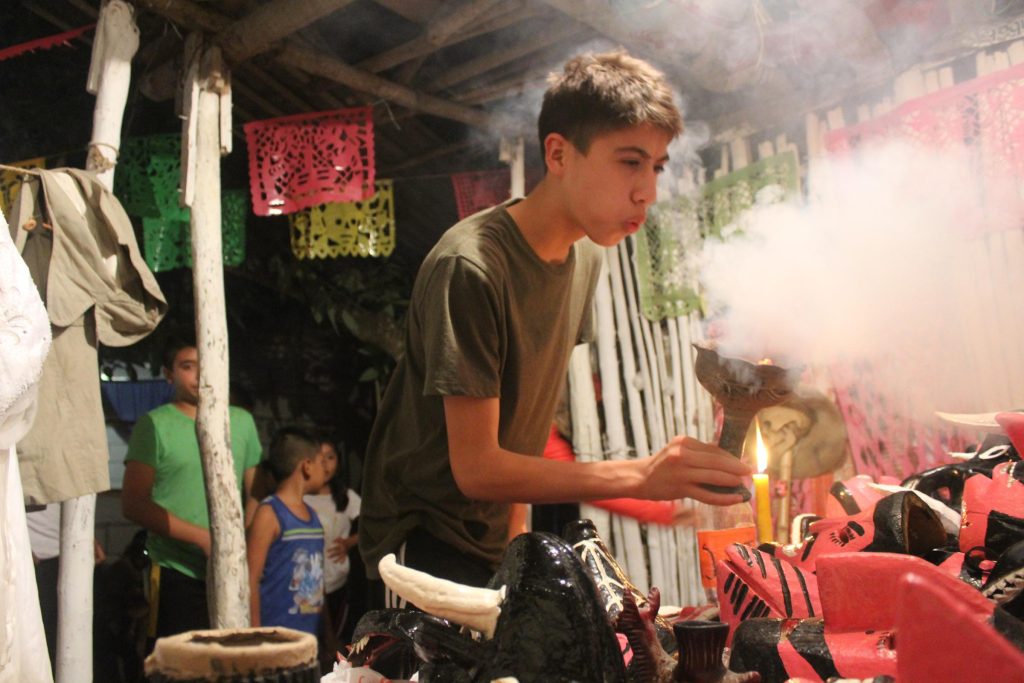
Image 23. Sahumar not to go crazy
Chapulhuacanito, Tamazunchale, S.L.P. Mexico. September 2018.
During the lowering of masks, it is necessary that all the people attending the ritual pass by to smoke them. This will prevent them from going crazy, which consists in not falling asleep and listening to the disguised people. In case of going crazy, the entrepreneur has to carve a mask and give to drink the powder that comes out with aguardiente.
Image 24. Óscar's unveiling
Chapulhuacanito, Tamazunchale, S.L.P. Mexico. November 2019.
In the unveiling, when one takes off the mask, I feel sad that I will not return until next year.
Oscar
